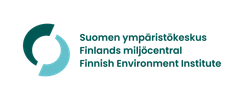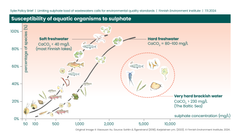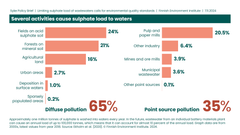Policy Brief: Limiting sulphate load of wastewaters calls for environmental quality standards
The clean energy transition and the green transition are bringing mining and battery technology industries to Finland. As a result, sulphate discharges into inland waters and the Baltic Sea will increase. Sulphate also has beneficial effects in water bodies, and it is not currently classified as a harmful substance. However, a high local load may adversely affect aquatic organisms, especially in lakes with a naturally low sulphate concentration. In its new Policy Brief, the Finnish Environment Institute issues recommendations for reducing the harmful effects of the sulphate load in wastewaters.
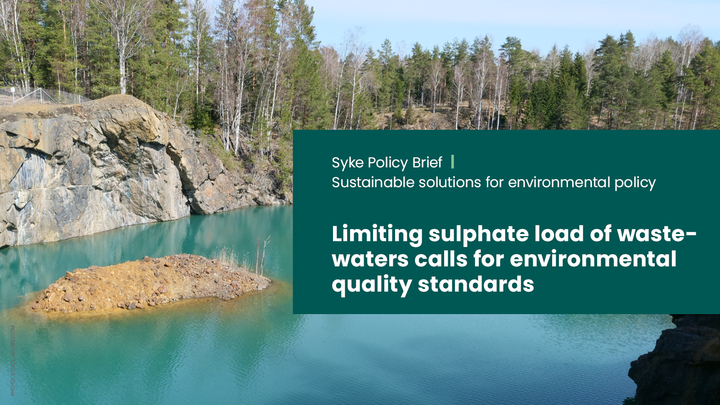
New ways of producing and storing energy are necessary in order to mitigate climate change. To achieve this, mining and battery technology industries are also needed in Finland. Particular concerns have been raised recently over large sulphate discharges of wastewaters into water bodies. “New studies have shown that sulphate can harm organisms, especially in lakes,” says Jouni Lehtoranta, Senior Researcher at the Finnish Environment Institute. This issue is also topical because a revision of the Government Decree on Substances Dangerous and Harmful to the Aquatic Environment is about to be launched.
Sulphate is harmful to lake organisms
The concentration of sulphate that is harmless to organisms has been studied by the University of Jyväskylä and the Finnish Environment Institute. “Toxicity tests indicate that a high load may have adverse effects on aquatic organisms, especially in lakes with naturally low sulphate concentration. In the Baltic sea, organisms adapted to salinity appear to tolerate much higher sulphate concentrations than those in lakes,” says Matti Leppänen, Senior Researcher at the Finnish Environment Institute.
Both short-term and long-term sulphate exposure tests were carried out on organisms in inland waterways and the brackish water of the Baltic Sea. The safe sulphate concentration in long-term exposure in freshwaters varied between 39 and 65 milligrams per litre. In short-term exposure, the concentration varied between 257 and 339 milligrams per litre. “We are still working on safe concentrations for brackish water species, but the harmless concentration seems to be significantly higher than in lakes,” says Leppänen.
Finnish Environment Institute proposes limit values
Sulphate is not currently classified as a harmful substance, and it is not included in the Finnish Decree on Substances Dangerous and Harmful to the Aquatic Environment. "Sulphate should be added to the Decree, and scientifically derived environmental quality standards should be set for it," says Jukka Mehtonen, Senior Coordinator at the Finnish Environment Institute.
Separate standards are needed for inland and coastal waters. The Finnish Environment Institute’s proposal for the quality standard of annual average concentration is 39 milligrams per litre for inland waters and 279 milligrams per litre for instantaneous concentration. As the studies are completed, environmental quality standards for sulphate will also be proposed for coastal waters.
“The harmful effects of sulphate can be mitigated by placing the wastewater discharge site in an area where the wastewater will dilute rapidly, and the dilute wastewater flows downstream or into the open sea. The most suitable discharge site can be found by modelling. Options for removing sulphate during manufacturing processes should also be investigated,” says Jouni Lehtoranta.
Mining and battery technology industries are essential in the green transition. However, the publication stresses that in green transition projects, it is also important to examine the overall environmental impacts, including on air, soil and water, as well as the life cycle impacts of manufacturing.
Further information
Jouni Lehtoranta, Senior Researcher, Finnish Environment Institute Syke, tel. +358 295 251 363, firstname.lastname@syke.fi
Matti Leppänen, Senior Researcher (studies on harmful effects of sulphates), Finnish Environment Institute Syke, tel. +368 295 251 368, firstname.lastname@syke.fi
Jukka Mehtonen, Senior Coordinator (Decree on Substances Dangerous and Harmful to the Aquatic Environment), Finnish Environment Institute Syke, tel. +358 295 251 421, firstname.lastname@syke.fi
Antti Belinskij, Research Professor (Environmental Law), Finnish Environment Institute Syke, +358 295 251 088, firstname.lastname@syke.fi
All Syke Policy Briefs:
Keywords
Contacts
Media service at Finnish Environment Institute
Our Media Service provides information on research, helps journalists find experts for interviews and provides photos for media use.
Our Communication experts will answer your inquiries on weekdays from 9 am to 4 pm.
Images
Finnish Environment Institute - We build hope through research.
Finnish Environment Institute
Latokartanonkaari 11
00790 Helsinki
+358 295 251 000
It is time to move beyond solving environmental problems one by one, to systemic sustainability transformations. The Finnish Environment Institute (Syke) contributes to building a sustainable society through research, information and services. The Finnish Environment Institute is a research institute with 700 experts and researchers located in Helsinki, Oulu, Jyväskylä and Joensuu.
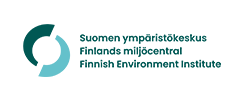
Subscribe to releases from Suomen ympäristökeskus
Subscribe to all the latest releases from Suomen ympäristökeskus by registering your e-mail address below. You can unsubscribe at any time.
Latest releases from Suomen ympäristökeskus
Selvitys: Merituulivoima ohjattava herkimpien lintualueiden ulkopuolelle4.7.2025 08:57:54 EEST | Tiedote
Merituulivoimalat tulisi rakentaa lintujen suojelemiseksi kokonaan riskialtteimpien alueiden ulkopuolelle, suosittaa Suomen ympäristökeskuksen julkaisema selvitys. Laajan asiantuntijajoukon valmistelema raportti kokoaa yhteen Suomen merialueen herkät lintualueet ja esittää suosituksia merituulivoiman suunnittelun tueksi.
Antalet observationer av cyanobakterier har ökat något i insjöar, längs kusten och i öppna havsområden i Finska viken3.7.2025 13:07:32 EEST | Pressmeddelande
Situationen med cyanobakterier i insjöar utvecklas på ett sätt som är typiskt för högsommaren, medan det vid kustområden har observerats något färre alger än vanligt. I östra Finska viken har cyanobakterier dock observerats både vid kusten och på öppet hav. De kraftiga vindarna i slutet av veckan blandar om vattnet och gör det svårare att observera algerna.
The number of blue-green algae observations has slightly increased in inland waters, along the coast, and in the open sea areas of the Gulf of Finland3.7.2025 13:06:05 EEST | Press release
The blue-green algae situation in inland waters is progressing in a manner typical for midsummer, while slightly less algae than usual have been observed in coastal areas. However, in the eastern Gulf of Finland, blue-green algae have been detected both along the coast and in open sea areas. Strong winds later in the week will mix the water, making it more difficult to observe the algae.
Sinilevähavaintojen määrä lisääntynyt hieman sisävesillä, rannikolla ja Suomenlahden avomerialueilla3.7.2025 13:00:00 EEST | Tiedote
Sisävesien sinilevätilanne etenee keskikesälle tyypilliseen tapaan, rannikkoalueilla levää on puolestaan havaittu hieman tavallista vähemmän. Itäisellä Suomenlahdella sinilevää on kuitenkin havaittavissa niin rannikolla kuin avomerialueilla. Loppuviikon kovat tuulet sekoittavat sinilevän veteen vaikeuttaen sen havainnointia.
Finnish Environment Institute and Kuva Space partner to enhance water quality monitoring3.7.2025 10:32:15 EEST | Press release
This public-private partnership will test the use of hyperspectral satellite observations in developing further the national algae monitoring.
In our pressroom you can read all our latest releases, find our press contacts, images, documents and other relevant information about us.
Visit our pressroom